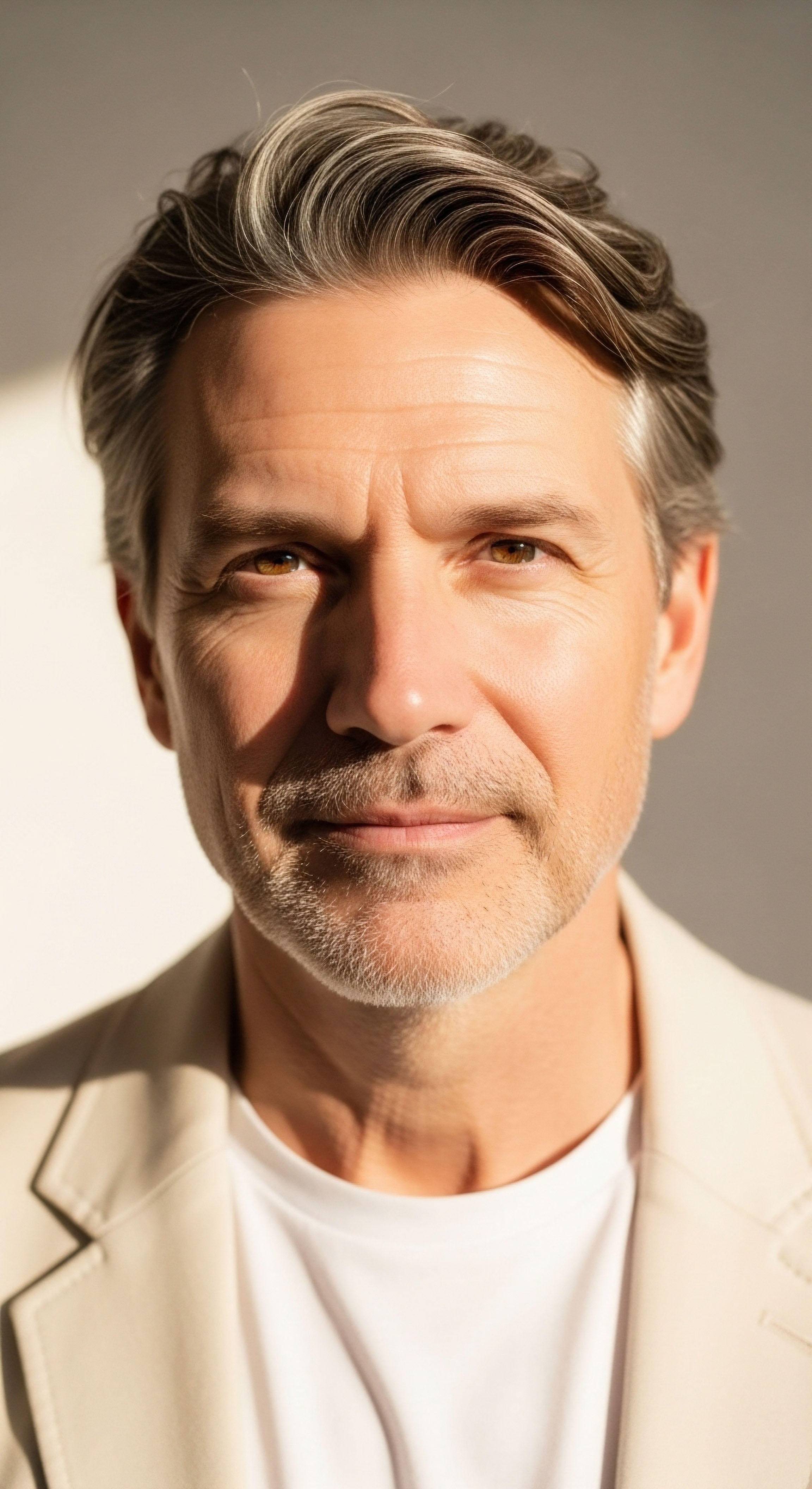

The Year the Future Was Paused
There was a script for vitality, a well-understood blueprint for maintaining the body’s peak operational capacity. For a generation of women, the conversation around hormonal health was one of proactive stewardship, a way to architect a life of sustained energy and clarity.
The dialogue was about personal agency over the biological systems that drive performance. Then, in 2002, a single study emerged, and the script was torn apart. The Women’s Health Initiative Meaning ∞ The Women’s Health Initiative (WHI) was a large, long-term national health study by the U.S. (WHI) study was published, and its conclusions sent a shockwave through the medical community and the public consciousness. The narrative of proactive optimization was abruptly replaced by a lexicon of risk and fear.
The immediate aftermath was a mass exodus from hormone replacement therapy Meaning ∞ Hormone Replacement Therapy, often referred to as HRT, involves the administration of exogenous hormones to supplement or replace endogenous hormones that are deficient or absent in the body. (HRT). A tool that many women had used to maintain their cognitive edge, their physical strength, and their emotional equilibrium was suddenly reframed as a liability. This shift in perception was not a subtle one.
It was a seismic event that altered the course of women’s health Meaning ∞ Women’s Health refers to the specific physiological, psychological, and social well-being considerations pertinent to biological females across their lifespan, encompassing reproductive, hormonal, and gender-specific health conditions. for decades. The decision to halt the study was presented as a measure of safety, but the result was a widespread and lasting confusion that deprived millions of women of a powerful resource for personal optimization. The prevailing wisdom became one of passive acceptance of age-related decline, a stark departure from the proactive mindset that had been gaining momentum.
The 2002 Women’s Health Initiative study, which primarily targeted older women with an average age of 63, was not designed to assess the impact of hormone therapy on the symptoms of menopause.
This period can be seen as a great unraveling of personal authority in health. Women who had been confidently managing their well-being were now faced with a stark choice ∞ accept the decline or take a path that had been publicly branded as dangerous. The nuance of the science was lost in the headlines.
The specific hormonal formulations used in the study, the age of the participants, and the pre-existing conditions were all critical details that were largely overlooked in the public discourse. The result was a generation of women who were taught to fear the very hormones that defined their vitality. They were, in effect, told to accept a diminished version of themselves, to retreat from the pursuit of their prime.


Recalibrating the System
Reclaiming your biological potential begins with understanding the fundamental flaws in the 2002 WHI study’s design and interpretation. This is not about rewriting history, but about applying a more sophisticated, modern lens to the data. The original study, while ambitious, had several critical limitations that are now widely acknowledged by the scientific community. A close examination of these flaws reveals a different story, one that empowers women to make informed decisions about their health.

Deconstructing the Flawed Architecture
The 2002 WHI study was not the definitive final word on HRT. It was a single data point, and a flawed one at that. Here are the key architectural weaknesses of the study that have been identified in subsequent analyses:
- The age of the participants was a significant confounding factor. The average age of the women in the study was 63, with many being more than a decade past menopause. This is a critical distinction, as initiating hormone therapy in older women who have been without hormones for a long time carries different implications than starting it in perimenopausal or early postmenopausal women.
- The study used a specific combination of hormones ∞ conjugated equine estrogens (CEE) and medroxyprogesterone acetate (MPA). These are not the same as the bioidentical hormones that are often used in modern HRT protocols. The type of progestin used, in particular, has been a subject of much debate and research since the study was published.
- The trial was stopped prematurely, which can affect the statistical power and the reliability of the conclusions. A full and complete data set was never collected, leaving many questions unanswered.
- The study’s results were widely misinterpreted and extrapolated to all women, regardless of age or health status. The initial reports created a media frenzy that stripped the findings of their context and nuance, leading to a one-size-fits-all conclusion that was not supported by the data.

The Modern Blueprint for Optimization
With a clearer understanding of the 2002 study’s limitations, a new, more precise model for hormone optimization Meaning ∞ Hormone optimization refers to the clinical process of assessing and adjusting an individual’s endocrine system to achieve physiological hormone levels that support optimal health, well-being, and cellular function. has emerged. This modern approach is built on a foundation of individualized assessment and a deep respect for the body’s intricate hormonal symphony. The goal is to restore hormonal balance in a way that is both safe and effective, using the lowest effective dose for the appropriate duration.
The new blueprint includes the following principles:
- The importance of the “timing hypothesis.” Subsequent research has shown that the benefits of HRT are most pronounced and the risks are minimized when it is initiated in women who are under 60 or within 10 years of menopause. This is known as the “timing hypothesis,” and it is a cornerstone of modern HRT protocols.
- The use of bioidentical hormones. Many modern protocols utilize bioidentical hormones, which are chemically identical to the hormones produced by the human body. This allows for a more natural and personalized approach to hormone optimization.
- A focus on individualized treatment. A one-size-fits-all approach to HRT is now considered outdated. Modern protocols are tailored to the individual woman, taking into account her specific symptoms, health history, and personal preferences.
- A comprehensive approach to health. Hormone optimization is viewed as one part of a larger strategy for health and wellness. It is most effective when combined with a healthy lifestyle, including a balanced diet, regular exercise, and stress management.
A reanalysis of the WHI data, after accounting for patient age, revealed that coronary artery disease and overall mortality rates were decreased in women who received HRT within 10 years of beginning menopause.


The Ignition Point
The decision to recalibrate your hormonal system is a deeply personal one. It is a proactive choice to engage with your biology in a new and powerful way. The question is not simply if you should consider hormone optimization, but when the intervention will be most effective. The modern understanding of hormonal health points to a specific window of opportunity, a threshold where the benefits are maximized and the potential for adverse effects is minimized.

Your Biological Prime Time
The optimal time to consider hormone optimization is during the perimenopausal and early postmenopausal years. This is the period when the body’s natural hormone production begins to decline, leading to a cascade of physical and emotional changes. By intervening at this stage, you can effectively bridge the gap left by diminishing hormone levels, maintaining your vitality Meaning ∞ Vitality denotes the physiological state of possessing robust physical and mental energy, characterized by an individual’s capacity for sustained activity, resilience, and overall well-being. and performance as you age.
The signals that it may be time to explore hormone optimization include:
- A persistent feeling of fatigue that is not relieved by rest.
- A noticeable decline in cognitive function, including brain fog and difficulty concentrating.
- Changes in body composition, such as an increase in visceral fat and a loss of muscle mass.
- A decrease in libido and overall sense of well-being.
- The onset of vasomotor symptoms, such as hot flashes and night sweats.
These are not simply “symptoms” to be endured. They are data points, signals from your body that its internal systems are in a state of flux. By paying attention to these signals and taking proactive steps to address them, you can rewrite your personal script for aging.

The Payoff Horizon
Once you embark on a personalized hormone optimization protocol, the benefits can become apparent relatively quickly. Many women report a noticeable improvement in their energy levels, mental clarity, and overall sense of vitality within the first few weeks of treatment. Over time, the benefits can become even more pronounced, with improvements in body composition, bone density, and cardiovascular health.
The payoff is not just about feeling better. It is about reclaiming your capacity to perform at your peak, both personally and professionally. It is about having the energy and focus to pursue your passions, to engage fully with your life, and to architect a future that is defined by vitality and strength.

The Architect of Your Biology
The narrative of aging is not a fixed one. It is a story that is constantly being revised and rewritten by the advancements of science and the choices we make as individuals. For too long, the story of women’s health has been shaped by fear and misinformation.
The 2002 WHI study cast a long shadow, but we are now emerging into the light of a new understanding. We have the data, we have the tools, and we have the knowledge to take back control of our biological destiny.
The path forward is one of proactive optimization, of viewing the body as a system that can be tuned and refined for peak performance. This is not about chasing youth. It is about claiming your power, at every stage of life. It is about understanding that you are the architect of your own biology, and that you have the ability to build a life of extraordinary vitality.








